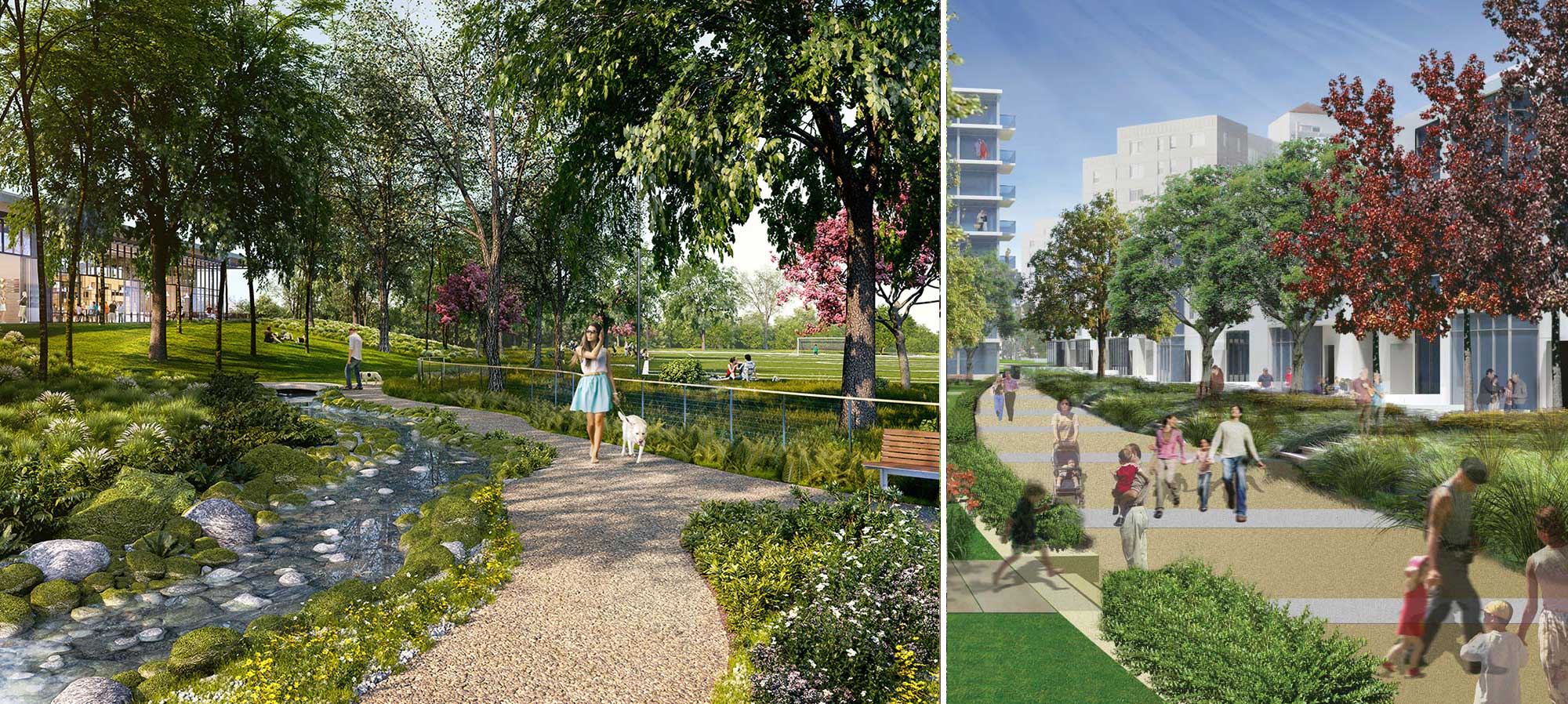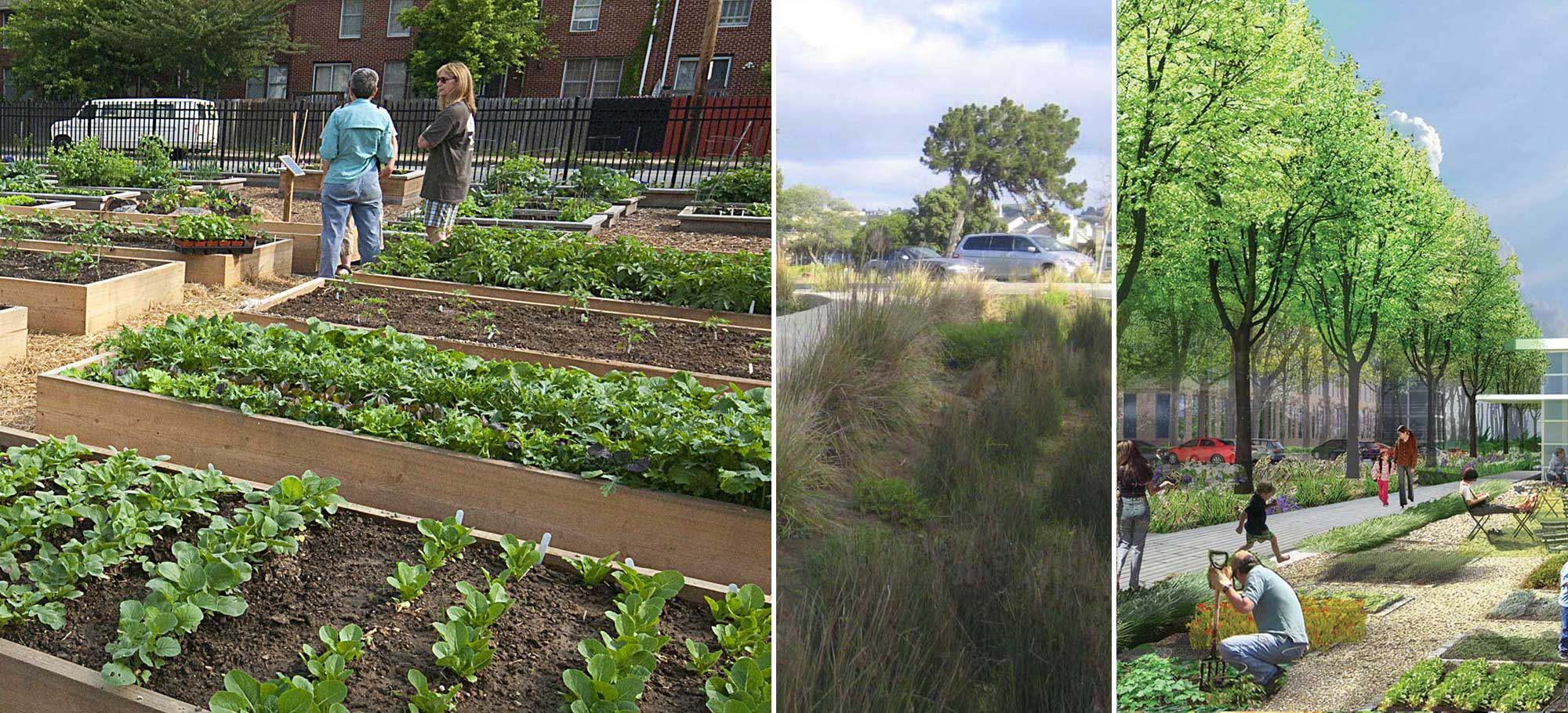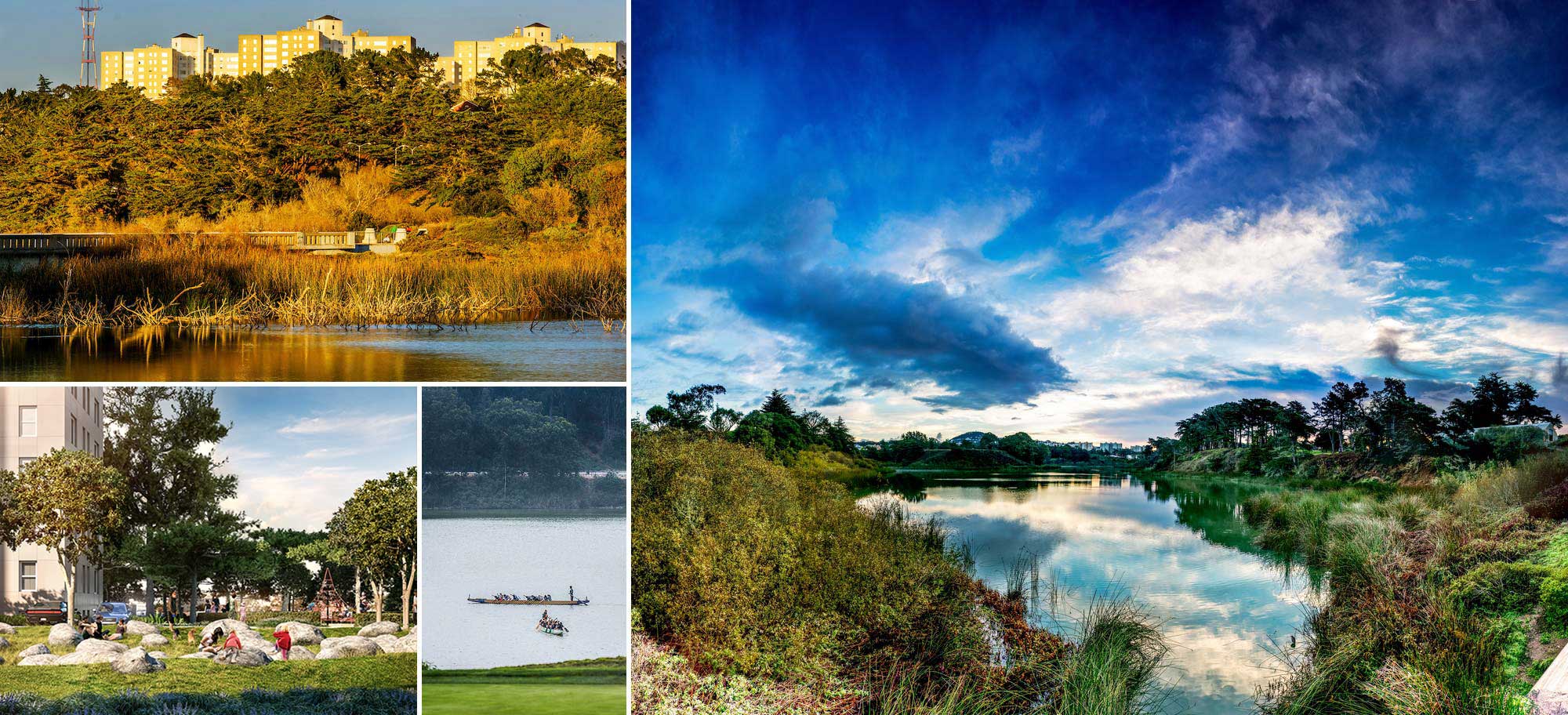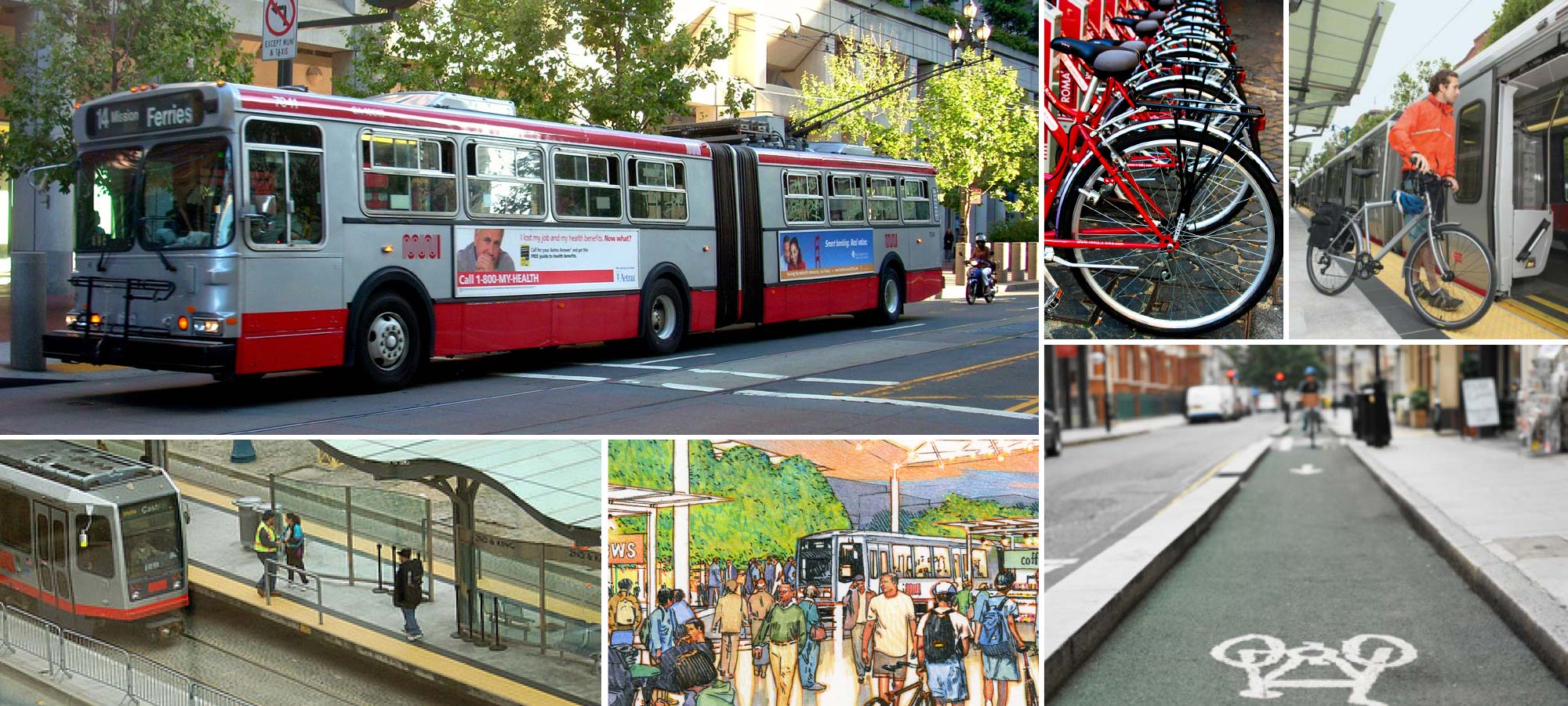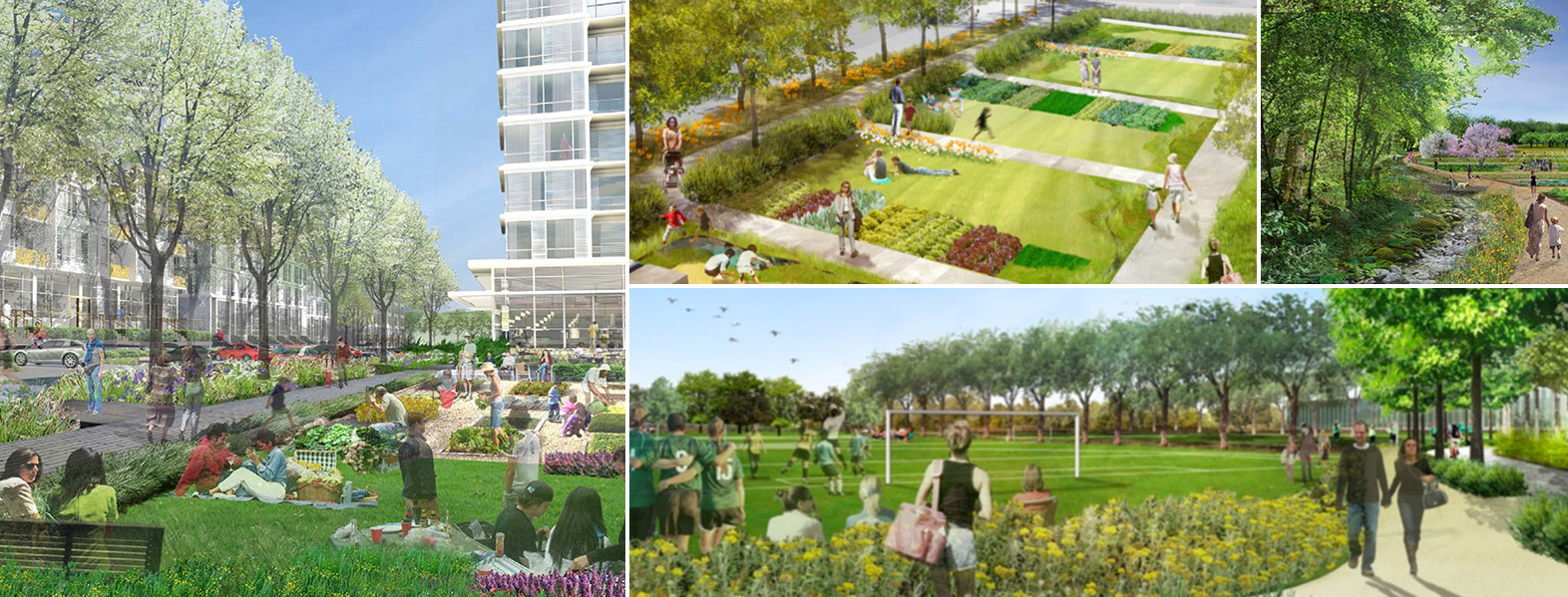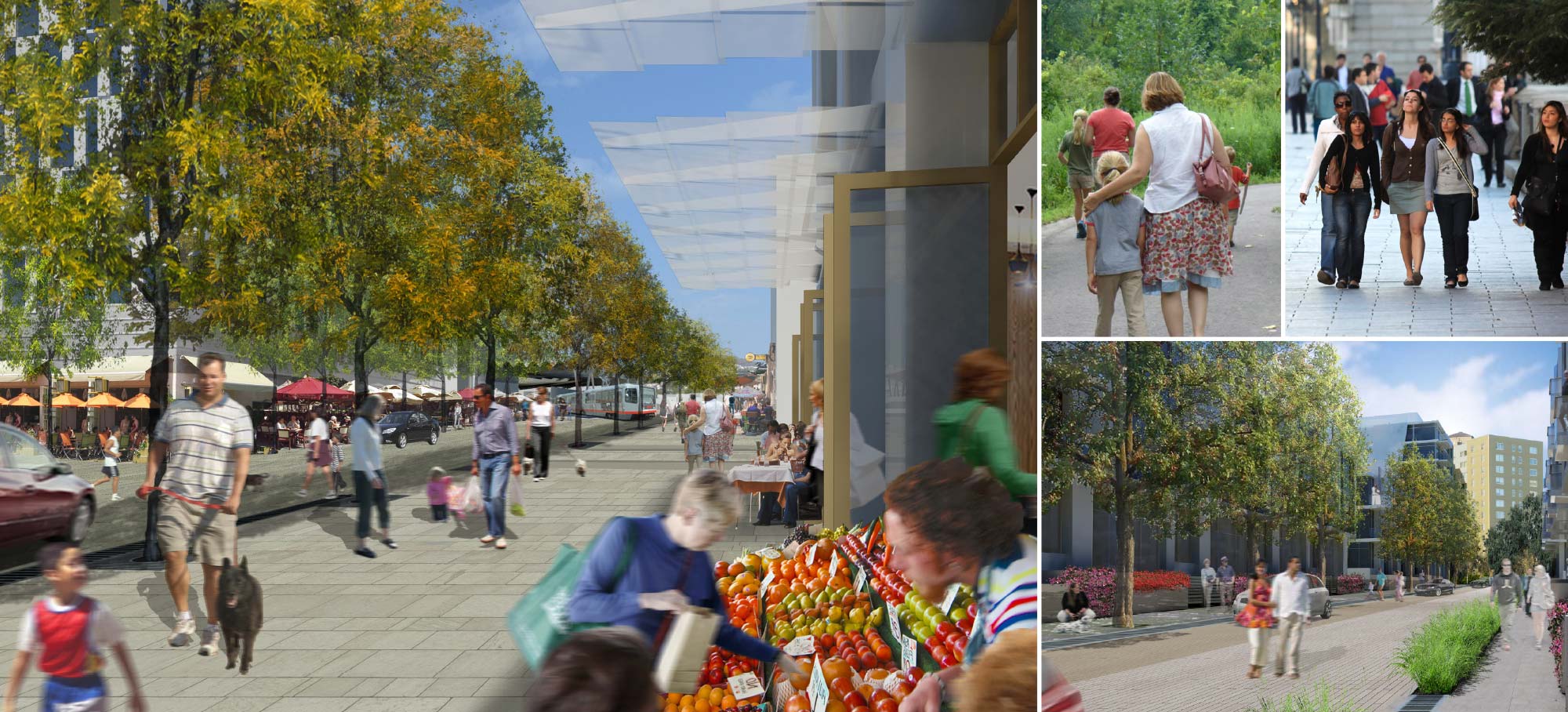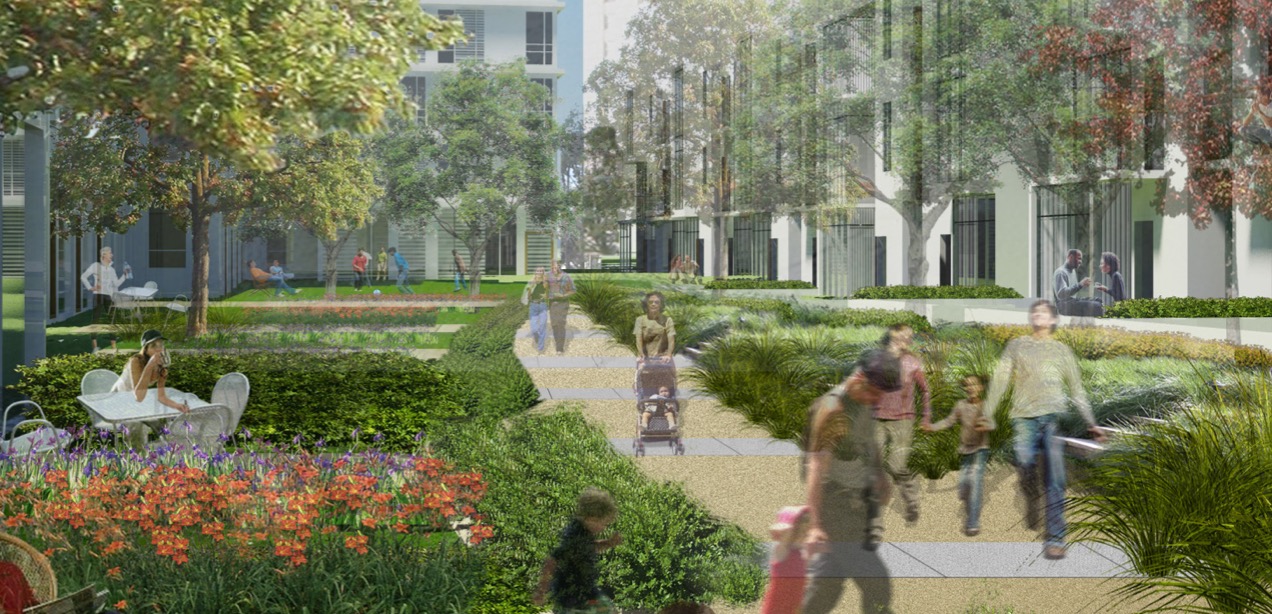Right now, storm water runoff goes straight into the city’s combined sewer system where it ends up at the coastal water treatment plant to be cleaned and dumped into the ocean. Disconnecting storm water from this system entirely and building our own transformative infrastructure consisting of bioswales, biogutters, ponds, rain-gardens and other low impact measures, like permeable paving, all designed to retain, filter and carry runoff water to the underlying aquifer and back into Lake Merced, will allow us to restore an original wetland at the southeast corner of the site. These natural systems will not only save millions of gallons of water a year but also restore biodiversity, improve air quality and enhance community spaces while minimizing overload of the City’s sewage treatment system during heavy storms or floods.
In addition to treating storm water onsite, we will also install ultra-low flow water fixtures to reduce water consumption and lower the demand on the water supply. We will provide infrastructure for recycled water sources to further reduce the demand for irrigation, toilet flushing and ultimately laundry.
We will reduce energy consumption, promote renewable energy production, and adapt to future energy sources to achieve greenhouse gas neutrality.
Rooftop solar cells and wind turbines when installed could generate a portion of the site’s overall electrical demand. Domestic hot water could be heated from cogeneration – a process in which heat is produced as a by-product from an engine creating electricity. Fueled by natural gas, cogeneration systems can generate electricity more cleanly than the conventional power plants providing electricity to the grid and with less transmission loss.

